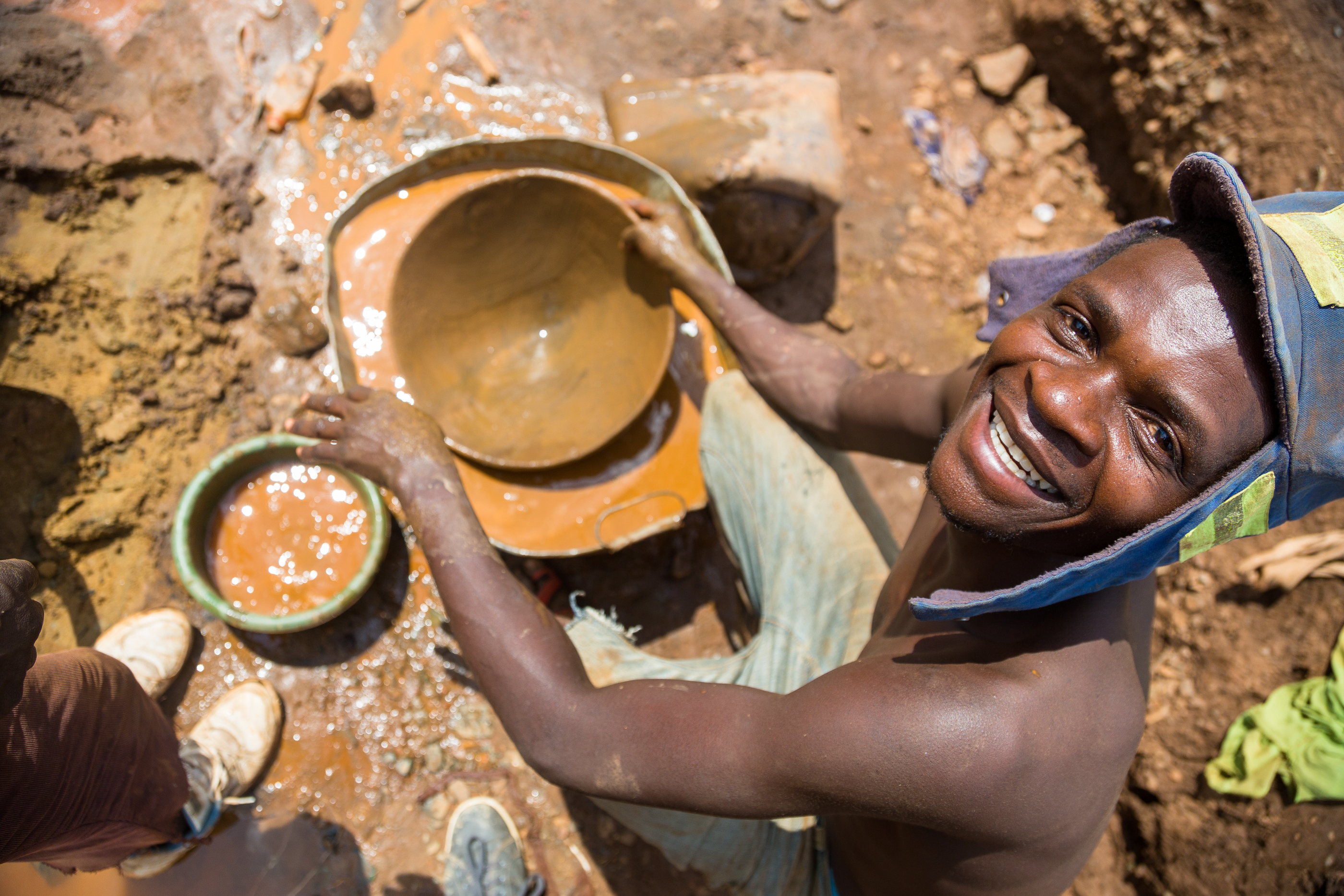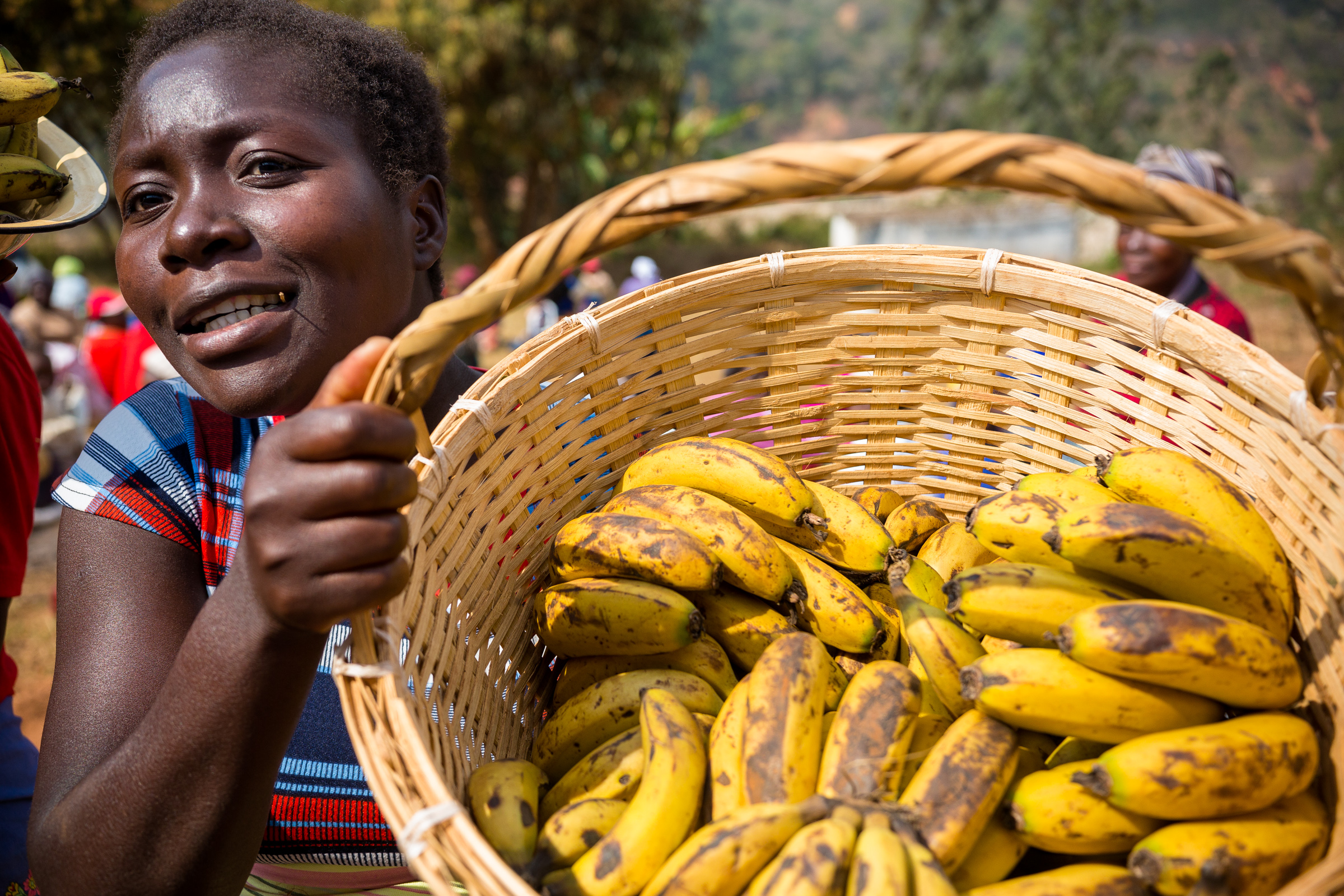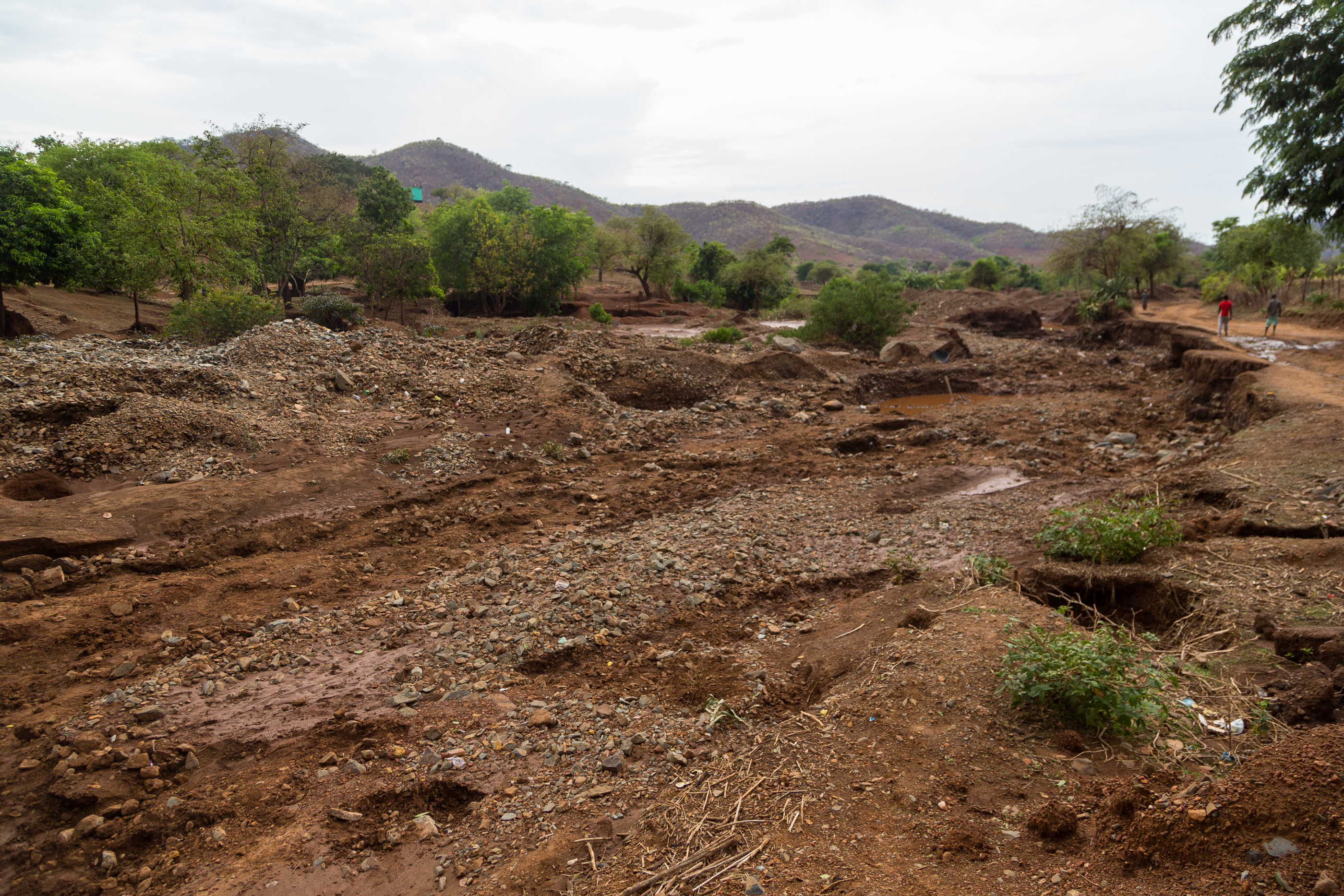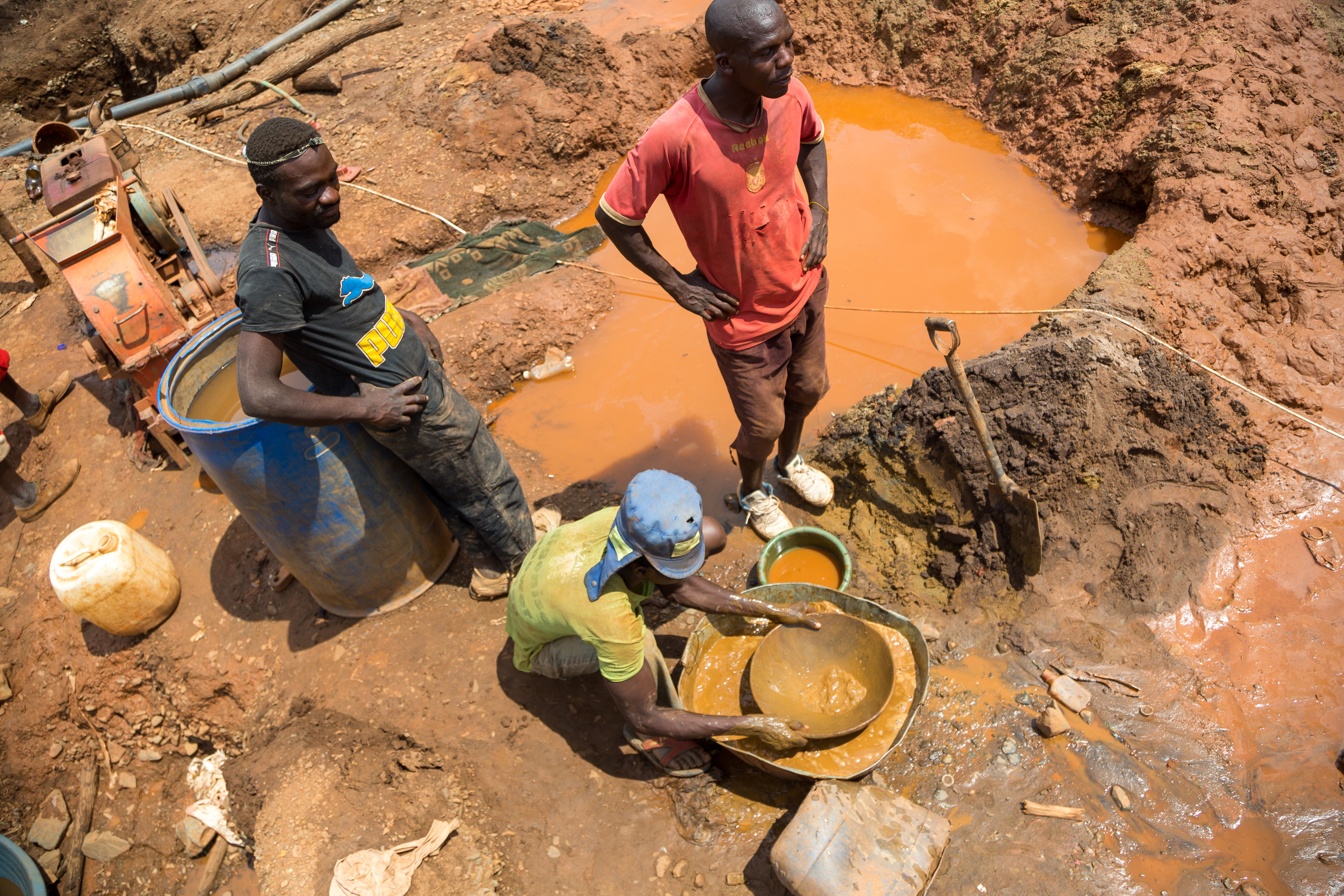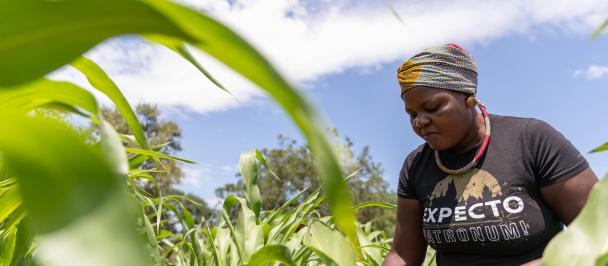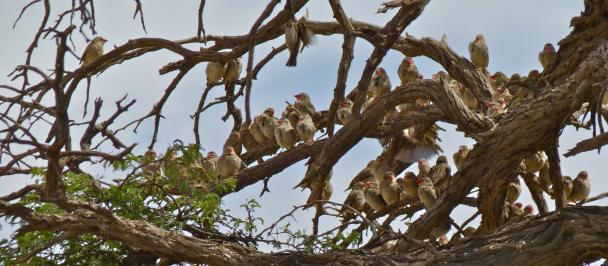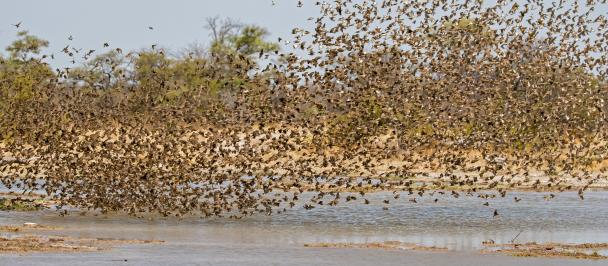Written by Gift Nthuli , Accelerator Lab, Head of Experimentation
Going for Gold - Supporting the extractives industry
January 31, 2020
Figure 1: Gold panner in Makaha
From the days of the Munomutapa gold mines to modern day electronic circuitry and space suits, gold remains one of the most valuable and versatile metals, versatile to sustaining a productive global economy. In Zimbabwe gold production is a crucial component of the nation’s GDP and artisanal and small-scale gold mining (ASGM) is anticipated to be a major boost towards attaining the 12 billion by 2023 mining vision set by the president in 2019. Given the influence that gold mining has on rural communities, UNDP Zimbabwe is investing in an extractives program aimed at assisting the government in creating a more productive, environmentally and socially responsible extractives industry. In January the UNDP Zimbabwe Accelerator Lab went on a field mission to Makaha, a mining community three hours north of Harare, to map out the threats and opportunities faced by the community. In this blog we discuss the key observations made and how UNDP Zimbabwe’s upcoming extractives program will benefit artisanal gold miners.
In 2019 artisanal miners in Zimbabwe produced more than 50% of the country’s gold which makes the gold market in Zimbabwe an ASGM driven market. Such a market could bring about certain advantages as documented in Makaha. Unlike big player dominated economies where mining communities benefit indirectly through social cooperate responsibility, the artisanal led market in Zimbabwe directly injects profits into the community. Miners are paid in cash each time they sell their gold meaning there is no delay in shared prosperity. Mining becomes a form of livelihood that reduces the impact of climate change on rural communities.
Direct injection of profits into communities also creates an oasis of consumers in a rural economic dessert. In Makaha the Lab noticed increased income generating activities in mine peripherals. From food vendors to pop up shops selling motor spares, mining communities are a haven of financially capable consumers in rural areas (Figure 2). Artisanal miners are willing buyers in a community that would not have been able to support any form of entrepreneurial activities. However, as shall be discussed later, more work needs to be done to ensure that the profits from these spills over businesses stay in the community.
Figure 2: Food vendors in Mahaka mining sites. The cash influx creates localized economies of high purchase power consumers
Another advantage of an artisanal driven gold market in Zimbabwe is the increase in resilience to shocks which results from decentralizing the mining sector. Community miners in Makaha operate in small groups mining placer and reef gold over a wide area. Although haphazard, artisanal miners have created a disintegrated mining sector that is more resistant to shocks in other sectors of the economy. While large producers rely on localized, heavy diesel and electric powered machinery, artisanal mining teams typically need a compressor, pump and picks to operate. In addition, the groups are highly mobile, capable of relocating quick when disaster strikes or when an area becomes economically unviable to mine. Their relatively cheap equipment does not require significant forex capital meaning they are less affected by currency shortages. The result is a highly adaptable mining sector that contributes to the GDP during economically difficult times.
Challenges; Proof by fire
Of cause sustaining a disaggregated mining industry comes with its own challenges the biggest being the enforcement of environmental and health regulations. In Makaha one is confronted by large ditches, earth piles and pools of muddy red clays (Figure 3). These are visible signs of a environmental catastrophe created by unregulated reef gold miners. Likewise, placer gold mining has left rivers chocked with mud and in certain areas streams have stopped flowing. Use of mercury and cyanide in gold processing is still widely accepted regardless of its environmental and health impacts. There is urgent need for the miners to be trained on environmentally and health safe mining practices. Unfortunately, most of the miners in Makaha are unregistered with the Ministry of Mines and the Environmental Management Act, who are tasked with training and enforcing environmental regulations in Zimbabwe, can only avail resources to registered mines.
Figure 3: Environmental degradation in Makaha, Mudzi as a result of artisanal and small scale gold production.
Mining brings with its significant money circulation and as a result the ability to influence gender and social dynamics in mining communities. Headmasters interviewed in Makaha noted that school attendance for boys goes down each time news of a productive gold field spreads. As for girls, mining brings a bigger threat in the form of HIV, STIs and unwanted pregnancies. Male artisanal miners use money to lure young girls into sexual activity. The influx of cash in rural mining communities also leads to increased use of drugs which results in poor judgement and planning skills. Women interviewed by the Accelerator Lab in Makaha complained that the men who typically work in the more profitable reef gold mining do not bring profits home, but instead spend it on alcohol. Substance abuse is also hampering efforts to diversify livelihoods in mining communities. An officer from a UNDP resilience program in Makaha spoke of difficulties they are facing in bringing vocational training to youth in the area as they are usually either in the mines or under the influence of drugs.
While it takes a closer look to notice the above discussed effects of a cash influx in Makaha, one does not have to look hard to notice the inflated cost of goods in the area. Like most mining communities, life in Makaha is expensive. This is the downside of the artisanal mining driven economic oasis discussed above. Life becomes unbearable for most of the community not involved in the gold production value chain. The Lab also noted that most of the entrepreneurs in Makaha were being employed by an outsider. There is risk that the money is not staying in the community, but instead siphoned out by these small businesses.
Opportunities; Chasing the belt
UNDP Zimbabwe is working with government and partners on various projects that support transparency, social, health and environmental standards in the extractives industry. The country office brought in a consultant to craft the country’s extractive project document. First, the country office will conduct an inventory of past extractives projects and extract lessons to ensure that UNDP builds upon previous work. In 2015 EMA piloted a project in Ingwizi, Matabeleland South which explored how an agro-mining community would function. The Women’s Mining Centre project in Gowanda is also another example of previous work that will be taken into consideration.
The upcoming extractives program document will also benefit from the work being done by the Accelerator Lab in sensing country office programs to identify cross cutting themes. One theme identified being that as a result if climate change, Zimbabwe rural communities are shifting away from agriculture and exploring alternative livelihoods. For mining communities an agro-mining livelihood is promising but requires considerable support. Taking this into consideration, the extractive program will leverage the strengths of the various country office programs to deliver a multidimensional portfolio of interventions that seeks to make artisanal mining communities more resilient. The Accelerator Lab will contribute to this portfolio by bringing in local innovation that can be scaled to address local challenges. During the trip the lab came across a miner who was using underground water from mine shafts to irrigate crop. This could be a break through local solution for dry area like Makaha where access to water for irrigation and livestock is a big problem. Further water and soil tests will be conducted by EMA to assess the viability of this approach.
Figure 4: Artisanal gold miners at a mine site in Makaha, Mudzi. Typically miners utilize small machinery, shovels and picks for their operations.
UNDP Zimbabwe is also involved in boosting the transparency initiative being pursued by the government of Zimbabwe. Transparency in the registration of claims would make it easier for more artisanal miners to be formally recognized by the government. This would increase the number miners eligible for EMA training on environmentally friendly mining practices and the health dangers of the mercury and cyanide. In addition, UNDP Zimbabwe is working with the Ministry of Mines on a claim’s digitalization project, which will make it faster and easier to keep track of artisanal mining operations. An updated record of mines registered in Makaha will also enable the Ministry of mines to monitor gold volumes coming out of the area and plug illegal sales of the metal.
Of all the planned activities, the boldest would be the move to ban the use of Mercury in Zimbabwe under the Minamata convention. UNDP Zimbabwe is working with PACT, EMA and the Ministry of Mines, to pilot a mercury free gold processing plant in Makaha. Over the next couple of months machinery will be set up that seeks to produce gold volumes comparable or better than those from the amalgamation process with mercury. With the use of retorts having faced resistance from the miners, it will be important to study the community and understand the incentives that will drive them to adopt the new technology. At the same time UNDP Zimbabwe will be using both traditional and non-traditional communication means to educate communities on the dangers of cyanide and mercury in gold production. This will include the use of talk shows, roadshows and theatre to try and bring about behavioural change.
The road ahead
Artisanal and small-scale miners have cemented their importance in growing Zimbabwe’s economy. UNDP acknowledges the miners and the strengths that an artisanal lead mining sector could bring to the table. However, a lot of work remains in order Stay tuned to follow the country office’s journey as they work with the Accelerator Lab to implement a portfolio of interventions in Makaha. For example, such a portfolio could include climate smart technology for farmers, Social Health and Environment (SHE) training for miners, gender sensitivity programs for the whole communities, substance abuse rehabilitation, and entrepreneurial training for the youth. Such a portfolio would ensure that mining in Makaha and the rest of rural Zimbabwe is done in a safe way that grows local community and leaves a productive land for future generations.

 Locations
Locations